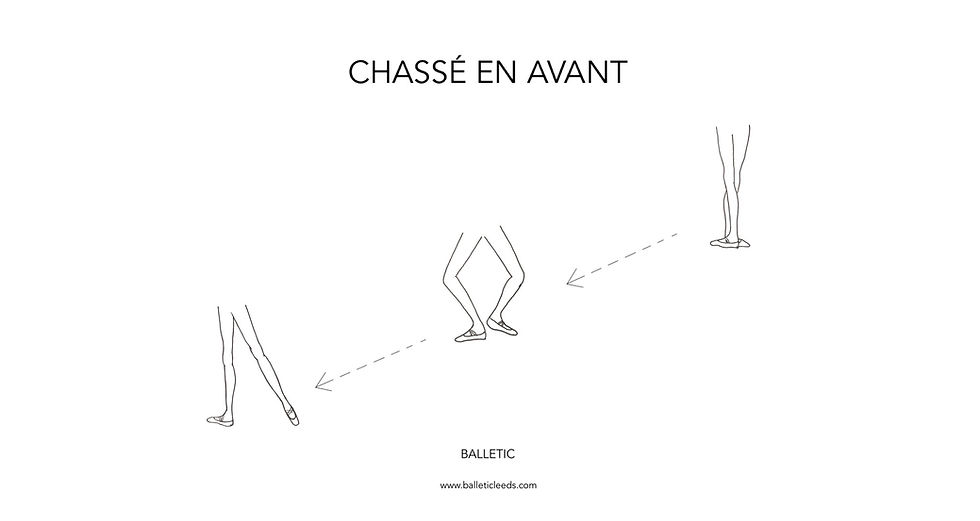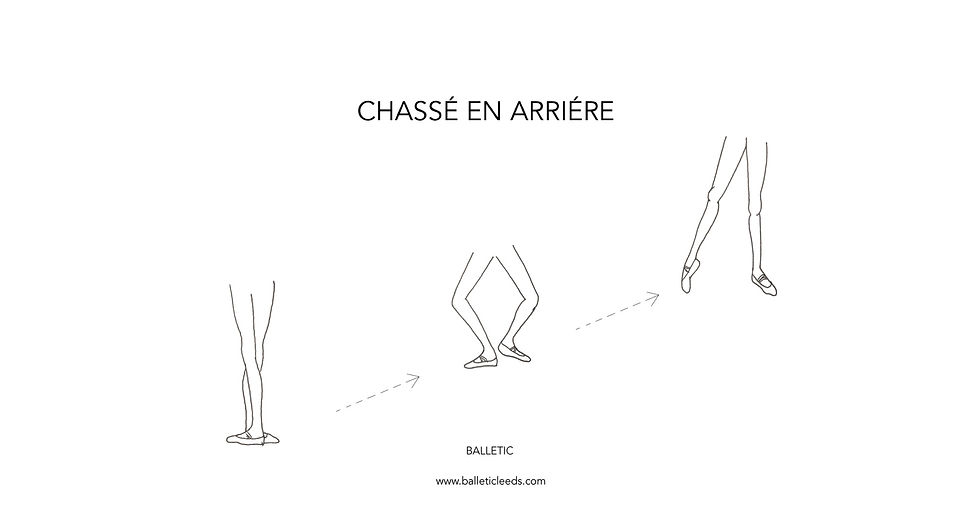CHASSÉ
- michellehiggins279

- Feb 7, 2020
- 2 min read
Updated: Oct 31, 2020
A chassé involves moving from one position to another. The step can be taken croisé, effacé or acarté and can travel forwards, backwards and to the side. The step usually commences from a fifth position followed by a demi plié. With a chassé en avant (moving forwards) the front foot pushes into the floor moving forwards through a fourth position coming to a stretched front leg with the back leg in a pointe tendu derrière. With a chassé en arriére (traveling backwards) the back foot pushes into the floor moving backwards through a fourth position in a plié, coming to a stretched back leg with the front leg in a pointe tendu devant. With a chassé de coté (traveling to the side) using either the front or back leg depending on the choreography you would push the foot into the direction you are traveling to, through a second position en demi plié to a pointe tendu to second. It’s important to remember that both feet need to stay on the floor when performing a chassé and that the heel isn’t slightly lifted. It’s also important to perform a deep plié and really use the floor in a chassé this will help you to move easily into the direction of travel.
Chasse en Avant (to pointe tendu derrière)
1. Stand in fifth position
2. Demi plié
3. Push the front foot to a fourth position remaining in a demi plié
4. Transfer onto the front foot stretching the front leg
5. Simultaneously the back leg stretches to point tendu derrière

Chasse en Arriére (to pointe tendu devant)
1. Stand in fifth position
2. Demi plié
3. Push the back foot to a fourth position remaining in a demi plié
4.Transfer onto the back foot stretching the back leg
5. Simultaneously the front leg stretches to point tendu devant

Chassé de Coté (to pointe tendu in second)
1. Fifth position right foot front*
2. Demi plié
3. Push the right foot into the floor traveling to stage right to second position staying in a demi plié
4. Transfer onto the right leg stretching the right leg
5. Simultaneously the left leg comes to a pointe tendu in second
*This step can commence with the left foot in front traveling to stage left
*This step can commence using the back leg moving to either stage left or stage right.
At Balletic we follow the bbodance ballet syllabus which in turn follows the Gail Grant Technical Manual and Dictionary of Classical Ballet for it’s ballet terminology. Diagrams may be different to what you are used to based on the school of ballet that you follow.





Comments